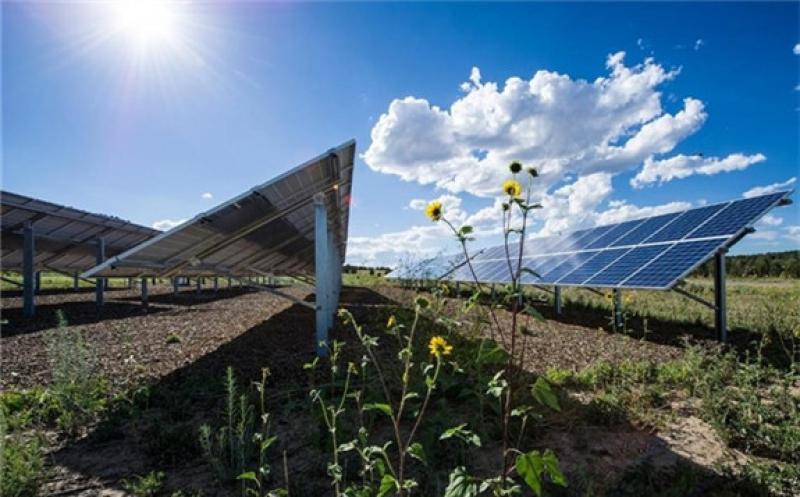
In contrast to conventional projections, which do not take into consideration climate-water impacts on electricity production, results of this new method reveal the national power grid may require an extra 5.3% to 12% of power-producing capacity to match demand and reliability requirements. The changes would lower carbon emissions and water usage, possibly helping alleviate future climate changes.
The new research is currently available online but will also be featured as the cover article in the December 3rd online issue and December 13th print issue of Environmental Science & Technology.
This is the first time anyone has modeled future electricity infrastructure under climate change using a method that includes feasibility checks to ensure results meet reliable power supply thresholds under climate and water resource constraints. We combined high-resolution hydrological, thermal-power plant, and capacity-expansion models to improve confidence in long-term electricity infrastructure planning under future climate-water impacts.
-----Ariel Miara, Study Lead Author and Senior Research Associate, Advanced Science Research Center, The Graduate Center, CUNY-ASRC
Ariel Miara continued, “Typically, this isn’t done for electricity infrastructure planning, or it’s done but without feasibility checks on results. Our approach allowed us to assess region-specific climate-water impacts on power supply reliability and identify potential adaptation steps to enhance reliability.”
Ariel Miara is also an energy, water, and environment researcher with the U.S. Department of Energy’s National Renewable Energy Laboratory (NREL).
The current U.S. grid is heavily dependent on thermal power plants that use coal, natural gas, and nuclear fuels; these are influenced by warm ambient temperatures and require large amounts of water for cooling purposes. Renewable energy sources such as solar PV and wind need very little amounts of water for working, as they do not need to be cooled. However, these technologies have a much smaller role to play in producing energy across the existing power grid.
Regional variances in power grid configuration and development to the year 2050, in combination with changes in climate and water availability, indicate that certain regions may face power-reliability challenges.
The team raised four main questions in the study:
How will future climate and water resource conditions influence four electricity infrastructure scenarios?
How will their new technique of modeling climate-water impacts on electricity production match with earlier efforts?
What types of technology options would be required to adapt to future climate-water conditions and meet dependable electricity-production levels?
What are the ensuing environmental and economic consequences?
To find answers to these questions, the researchers first simulated capacity-expansion situations for four electricity blends supporting different technology types (nuclear, coal, solar, and business as usual) without taking climate-water impacts into account. These projections to the year 2050 offered a standard understanding of results using existing capacity-expansion methods.
As a step forward, the scientists took into consideration climate-water effects on each electricity blend. This method enabled them to evaluate its influence on various types of systems and reveal potential adaptation steps essential for each to match energy demands.
Their analysis revealed that capacity reserve margins fall below particular reliability levels when capacity projections did not represent climate-water impacts, or when they try to but do not take into account feasibility checks.
We showed that power systems may face reliability challenges without climate-water adaptation. Viable solutions included tradeoffs in regional technology choice and typically more renewable-based versus thermal power generation. This results in lower overall water use and emissions for our electricity generation needs.
-----Ariel Miara, Study Lead Author and Senior Research Associate, Advanced Science Research Center, The Graduate Center, CUNY-ASRC
“This analysis is the capstone to a long series of studies that this research team has produced to analyze unique climate-water-environment interactions in the context of long-term energy planning under climate change,” said Charles Vörösmarty, study’s co-author and director of the CUNY ASRC Environmental Sciences Initiative.
The study provides valuable information and an initial roadmap for scientists, infrastructure planners, power companies, and communities to have informed conversations about how we plan future systems.
-----Charles Vörösmarty, Study Co-Author and Director of Environmental Sciences Initiative, CUNY-ASRC
Charles Vörösmarty was the principal investigator of this research. This study was a collaborative effort with NREL and Sandia National Laboratories. The study was financially supported by the National Science Foundation’s Water Sustainability and Climate Program.